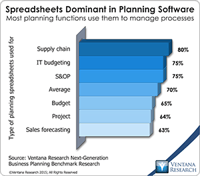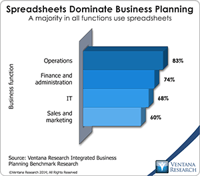Supply and demand chain planning and execution have grown in importance over the past decade as companies have recognized that software can meaningfully enhance their competitiveness and improve their financial performance. Sales and operations planning (S&OP) is an integrated business management process first developed in the 1980s aimed at achieving better alignment and synchronization between the supply chain, production and sales functions. A properly implemented S&OP process routinely...
Read More
Topics:
Planning,
SaaS,
Sales,
Forecast,
Mobile Technology,
Operational Performance Management (OPM),
Human Capital,
Supply Chain Planning,
Analytics,
Business Analytics,
Business Collaboration,
Cloud Computing,
Business Performance Management (BPM),
Financial Performance Management (FPM),
Sales Performance Management (SPM),
Sales Planning,
Supply Chain,
Supply Chain Performance Management (SCPM),
Demand Chain,
Integrated Business Planning,
SCM Demand Planning,
S&OP
Anaplan, a provider of cloud-based business planning software for sales, operations, and finance and administration departments, recently implemented its new Winter ’14 Release for customers. This release builds on my colleagues analysis on their innovation in business modeling and planning in 2013. Anaplan’s primary objective is to give companies a workable alternative to spreadsheets for business planning. It is a field in which opportunity exists. Our benchmark research on this topic finds...
Read More
Topics:
Big Data,
Performance Management,
Planning,
Predictive Analytics,
Marketing,
Office of Finance,
Operational Performance Management (OPM),
Operations,
Reporting,
Budgeting,
Controller,
Business Analytics,
Cloud Computing,
In-memory,
Business Performance Management (BPM),
CFO,
Financial Performance Management (FPM),
Sales Performance Management (SPM),
Sales Planning,
Supply Chain Performance Management (SCPM),
Workforce Performance Management (WPM),
Financial Performance Management,
financial reporting,
FPM,
Integrated Business Planning











